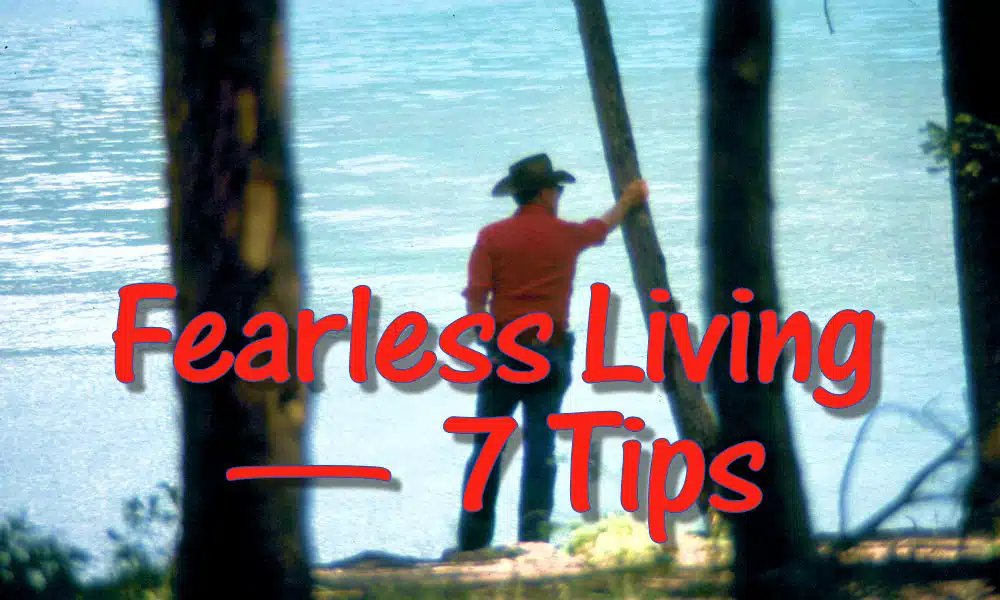- Ideas for Zen Living: 12 Presence Presents
- 5 Communication Tips
- 10 Quick Examples of Zen Living
- Better relating — 6 Ideas
- Fearless Living — 7 Tips
- 5 ways to pay attention
- 10 Zen Principles to Help You Live Life Better
- 7 Ways to Live in This Endless Moment
- 5 Key Concepts for Zen Living
- 9 Tools for Relating
- 3 Riffs on Relating
- Vulnerability — 5 things
- 5 Life Lessons You Need to Get
- 9 Ways to Screw up a Relationship
- 10 Things Your Mommy Forgot to Tell You
Fearless living: Many people wish to put their fears aside and to create and live a full and elegant life. In Zen, we say this is simple, as in “Simply Sit.” Or, “Pay attention!” Or, “Wake up!”

Want to learn more about living a full and meaningful life?
Want to have the best relationship ever?
Check out my books
Introduction to Fearless Living
Many people wish to put their fears aside and to create and live a full and elegant life. In Zen, we say this is simple, as in “Simply Sit.” Or, “Pay attention!” Or, “Wake up!”
The point of these little aphorisms is to bring living into the present moment.
Fearful living disables our ability to act in the here and now. Of course, when you think about it, the fear is totally internal. I fear what I am imagining might happen, and therefore am standing still doing nothing, or doing what I always do.
Fearless living is not reckless. It is both present and prepared. It also recognizes this fundamental truth:
All you can control is the action, not the outcome.
I often describe fearless living as acting with integrity. Integrity with what, you ask? With myself.
Integrity= “I am, I act, I ‘be’, exactly who I say I am.”
Below are some of the bedrock concepts that underpin the fearless life. I’m breaking down the aphorisms above into their components, (like a good little westerner) in order to restate what should be obvious:
The Fearless life is fully enacted, in the moment, and in total harmony with your essence.
1. Respond

It is essential to learn the difference between a reaction and a response. Being a practical guy, I’d remind you that what we are exploring here is what is not working for you. You can safely leave what works alone for now. You can come back later on, and improve upon them.
I define a non-working reaction as “a habit one has that consistently gets them pain, more problems, and exactly the opposite of their intent.”
It’s essence is captured in the famous line, “I get angry and yell, and the situation gets worse, but I just can’t help myself, so I just keep doing it.”
Well, of course you can. Changing a reaction into a response takes time, thought and discipline.
The essential part is to be clear about what you will do.
Most people say, “I’ll just stop yelling.” This is not a strategy, as there is no sense of what will happen in place of yelling.. A strategy is, “Next time I feel myself becoming angry, I’ll have a breath, shut up, and think through a clear and concise response, stating what I want, rather than what I don’t want, without blame.”
One of my friends described it this way: (She’s talking about being silent for a bit, to allow her brain to engage.)
“But [being silent] can let the other person know that you are angry and gives you time to sort out your thoughts so you can properly address the situation and not fly off the handle when you do talk. Sometimes when I get angry, I don’t know why and I need time to think the situation through. I need to think if I’m being rational or am I just being a drama queen and not getting my way. Also, it will give me time to clearly think of what I want to say so that he will understand how I’m feeling.”
Think:
- How are my habitual reactions serving me?
- What am I afraid will happen if I do things differently?
- What do I really want to accomplish in these situations?
- What would that look like?
Then: Here is my action plan for this situation.
2. Act
Oddly, and paradoxically, learning to respond, and practicing the response, leads to the response becoming instinctive, and therefore becoming a habitual reaction. In this case, however, it’s a positive one.
To demonstrate this physically to yourself, go to a staircase with a solid banister. Go up maybe five steps, hold the banister, start to walk down, and hold your foot in the air.
Now, think about taking the next step, in terms of what muscles to contract, how to balance.
At least, you should notice how hard it is to put your foot down to the next step.
As a child, this was how it was for you, standing on a step. Then, stepping became instinctual, and this is a good thing.
Practice, practice, practice
It became instinctual because you went to the staircase and practiced. I can’t tell you how many people come full stop when confronted, as in point 1, with changing a habit. as opposed to simply talking about changing. Out come the excuses.
For example, I have lots of clients working on aspects of their relational or sexual lives, and they tell me how much they want it to be different. I propose exercises and techniques, and say, “Go practice.”
Nada. Or Semi-nada.
And oddly, nothing changes.
Action is essential—
and the only way to engage in a fearless life is through consistent, responsive action. My friend, above, will only learn to speak her truth clearly by, wait for it, speaking her truth clearly. She goes on, in her note, to say,
“I understand doing things that way will help to build a stronger relationship and I will try and do that and hopefully he will too.”
If she were here, I’d remind her that the famous Jedi Master Yoda, a real Zen guy, said,

“Do or do not… there is no try.”
In our stair experiment, thinking about walking down stairs is ‘trying’ to walk down. You saw how well that works…
Try means “cop out” and “hedge my bets.” If I try, I can excuse not doing.
So, do.
In other words, act.
With integrity.
Think: what action will move me in the direction I say I want to go? Then, act. Living fearlessly requires constant, integrity based action.
3. Accept
A key concept in fearless living is acceptance.
What we accept is the Taoist concept,
“The way it is, is the way it is.”
I have limited control over externals. Many situations I find myself in are not the result of my actions, and I certainly did not imagine them into being, “The Secret” notwithstanding.
Acceptance is the recognition of the paradox of the truth of both of these concepts: “Shit happens and then you die,” and “total self-responsibility.”
Now let me be clear. You can refuse to accept this, and stomp your little feetsies and scream about how “It’s not fair!” And you may even be right. But get this: no one ever said this was a fair universe. It is neither fair nor unfair. It just is.
How Zen.
Denying the reality of reality changes nothing. You just become whiny and miserable.
So, start right now, accepting that fearless living is about you being in charge of you. Acting fearlessly, out of integrity, is for your benefit and to accelerate the depth of your spirit.
It is not a technique you implement to manipulate others into doing life your way. If you try that, you’re just swapping one form of manipulation for another.
That being said, fearless, integrity-based living does seem to create few waves. I suspect that this is so because so few people are actually out there living in this way. Most people are ducking their heads and hoping the problems and pain will disappear by magic.
A friend recently fired her mother. Their relationship was highly dysfunctional. My friend decided to stop this game. She made it for a month. A week or so ago, she resumed having ‘tea’ with her mother.
Yesterday, she said, “I have to figure out a way to sneak valium into my mother’s tea.” I made a comment about arsenic being simpler and only requiring one application.

What my friend won’t accept is that the mother she has is the mother she has. She wants her mom to change into the mom she wants to have. Fearless acceptance would be, This is my mom, and I choose not to spend time with her.” Or “This is my mom and I accept her as she is.”
Just a reminder—
No matter how elegantly you live your life, people will have adverse reactions to your living fearlessly. They will annoy themselves with what you say and do. They will try to get you to “behave the way you used to.”
Laugh, don’t bite, and move on.
Think: how is my refusal to accept the reality of my reality causing me to live with fear, uncertainly and no action? What ways can I use to remind myself to act with courage and clarity, all the time, and to let what happens be what happens?
Remember: if you act out of response-able, thoughtful clarity, you are doing the best a human can. From this place, you can fearlessly deal with whatever situation crosses your path.lexpix
4. The Focus of Fearless Living
If you aim at nothing, you will hit it.
Mastery of life requires focus. If, for example, your goal is ‘healthful, peaceful, centered living,’ life becomes simple. I weigh my next action against my focus. If it fits, I act. If not, I choose another action, or do not act at all. (The action of chosen inaction.)
The e‑mail correspondence I mentioned above started with my friend describing a situation she was in with her boyfriend, and saying
“… so he doesn’t think that I am a push over and can get away with treating me like dirt.”
I replied by suggesting she tell her boyfriend what she does want, and to do what she wants from him as she engages with him. (i.e. “I want total honesty in our relationship, so I am totally honest with you, no matter what you are doing.”)
What she was doing was stating what she doesn’t want:
a) to be a push over, and
b) to be treated like dirt.
When you think about it, if someone told you that, how would you assume they wanted to be treated? Honestly, you would have no clue.
Yet, this is what passes for conversation in most relationships, and it’s why so many fail. I wrote:
“Dar and I have only one relationship rule—total honesty. We set that up back when we first started dating seriously. It keeps things simple. We do as we choose to, and keep each other completely informed. It’s not about permission giving, as only I can determine what I will do, and the same for Dar.
So, I’d suggest you sit down with the bf, and say, “So, I’m angry that I didn’t set up a ground rule with you. Last night, I had an expectation that you were serious about meeting me, and if you changed your mind, that you would let me know. From now on, I’ll commit to letting you know how I am doing, where I’m going, and what’s up for me. If this relationship is going to work, I will expect the same from you.
In other words, total honesty.
Now, of course, that means that you have to state what you are thinking and feeling as things occur to you, as that’s part of being honest.”
Think: what is my focus for my life, my career, my relationships? How clear am I about stating what I do want, as opposed to whining about what I don’t want? Do I ‘do what I say I want,’ or am I waiting for someone else to ‘go first?’
Commit to discovering, then stating, then enacting your truth, fearlessly and with integrity.
5. The Discipline of Fearless Living
I use the word discipline to mean commitment, not punishment. I’m not into beating myself into submission through blaming or judging.
Discipline is about relentlessly engaging in what you say is important to you, while relentlessly letting go of what does not work.
Remember, fearlessness is not the absence of fear, nor the absence of fearful events. Fearlessness is decisive, focused, clear action in the face of fear. If I leave myself with an ‘out,’ I will surrender to my fears, sit down, become small—every time.
“Do that which you fear to do, and the fear will die” — Ralph Waldo Emerson
Our culture has replaced discipline with distraction. If you look unblinkingly into the face of the world, it’s a pretty scary place out there. You then get to choose. You are either a warrior or a patsy.
- The patsies choose addictions to avoid the discipline of action— drugs, alcohol, meaningless relationships, endless TV or sports or gambling. Anything to numb and distract.
- The warrior, in the Zen tradition, makes his/her lifework the elegant application of their skill set, for the betterment of their grasp of the here and now.
If you know the enemy and know yourself, you need not fear the result of a hundred battles.
If you know yourself but not the enemy, for every victory gained you will also suffer a defeat.
If you know neither the enemy nor yourself, you will succumb in every battle.— Sun Tzu
Life, I think, is a battle.
It’s a battle between yielding to the easy, numb, mindless ways of reactive living, as opposed to the discipline, clarity, honesty, vulnerability, and efficient action of responsive being.
Those with a disciplined heart and mind are not swayed or driven off-point. And with practice, this staying of the course seems almost effortless.
In Zen, this is called effortless effort.
Think: what do I use to distract myself from my fears? How disciplined am I? Am I willing to commit to a path, a way of being, for this lifetime? If so, define the path and walk it, no holds barred!
6. Engagement through Fearless Living
Fearlessness requires engagement with life and with ourselves. Often, we are more than willing to show the world what we assume is our ‘good side,’ while tremulously hiding what we think is bad. My friend wrote:
” I know I need to work on the being open thing with him. I am sometimes afraid to show who I am just in case he doesn’t like the real me. Maybe because it is new and I still want to impress him. But that gets tiring. I am who I am and nothing will change that. I can only grow as a person and hope that he can grow with me.”
She’s right on all counts.
Ben Wong and Jock McKeen used to say:
“Change isn’t possible. Choice always is.”
They mean that we are who we are, even (and especially!) the parts we try to hide.
Jung called the hidden stuff the “Shadow Material.” It’s the stuff society forced us to repress. It’s our petty, mean side, our angry, hateful side, our murderous rage. And no, this isn’t about expressing this stuff. It’s about owning it.
I need to engage with all of myself.

Back when I did Phase 1 at The Haven, we did some Shadow Work. In a visualization, I saw a samurai dressed in full armour. (Sorta the guy in the movie “Dragon”—Bruce Lee’s Demon…)
The samurai swung his sword at my head. Just before it bit in he stopped it, and turned its hilt toward me. He said, “You can kill, or you can heal.”
I realized that I had feared this “killing” energy, and had repressed it for a decade. I also realized I could embrace it, and engage with it, and use it to ‘heal.’
The Shadow Side contains the energy for excellence. It’s been pushed down there, under the influence of admonitions to ‘be innocuous, duck your head, drug yourself, and don’t be a bad girl/boy.’ This energy sits inside of us, dormant.

In Kundalini yoga, it’s described as a snake, coiled at the root Chakra, waiting to emerge by uncoiling and moving upward along the spine. In this way, the energy moves into the world.
I must be willing to accept and engage all of myself—my emotions, my drives, my energy, and my purpose.
Think: what aspects of your self do you judge to be bad, messy, nasty, awful? How much energy do you expend trying (but failing) to keep this stuff down? How does it emerge, seemingly ‘out of control,’ as you relate? What would it look like to incorporate the energy of your full being into yourself, and to act from a perspective of disciplined wholeness?
Remember: fearless living is whole living, and the energy for fearless action is always shadow energy!
7. Celebrate Fearless Living

Describe to me a celebration that is not a here-and-now experience. An imagined party is a pale version of the real thing. In all my years, the only celebrations I have had were ones I actually attended.

I often find myself stopping what I am doing and staring into Darbella’s face.
I have this deep feeling of gratitude and joy and sadness (that this will not last forever—and that would be me going non-present…) and respect and passion for her. I am in a sense celebrating my relationship with her.
With some people, I feel no celebration at all, but rather a burden.
A friend wrote to me a while ago that she’s engaged in a ‘cleaning out’ exercise. I wrote a series about that not so long ago. She’d cleaned out her body, which led to her cleaning out her apartment, (I highly recommend this… when we moved last time, we threw out 16 pickup truck full of ‘junk.’) she then decided to clean out her relationships:
” …and eventually to a stock-taking of the relationships in my life and where I am investing my energy with a view to eliminating what depletes me and expanding what feeds me.”
I would call that cleaning out a celebration to the nth degree.
Far too many of us drag people and objects and internal dramas around like deadwood. We are morose and unfocussed and in need of a good cleaning out. It’s the stuff stuffed in a sack we drag around after us.
Eventually, you realize that the stuff you tie yourself to defines you, and weighs you down.
Think: how can I make my life into a celebration? What am I grateful for? How do I shift things around so that I let go of what is not working, relevant, or helpful? How can I then move to a place of deep reverence and gratitude for who I am, who I associate with? And finally, how can I live the fearless life, fully engaged with ‘the whole catastrophe,’ with gratitude, serenity, passion and strength?

